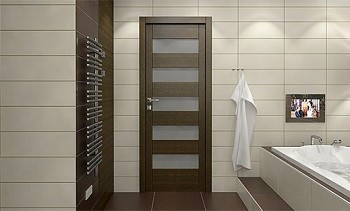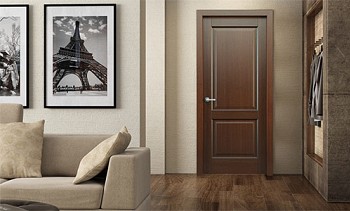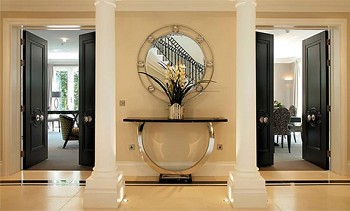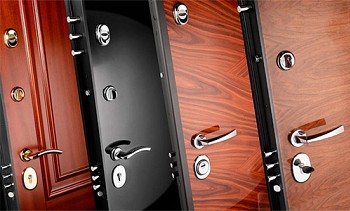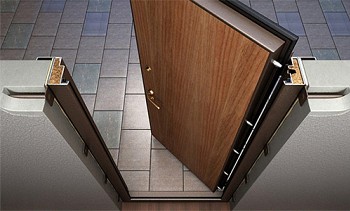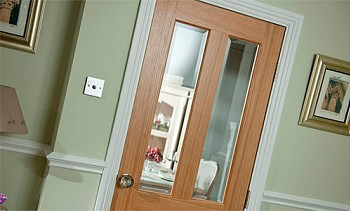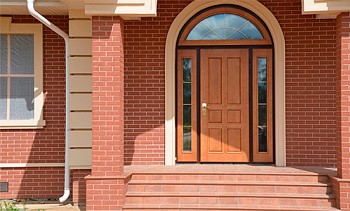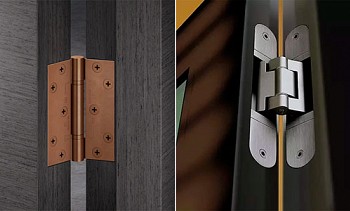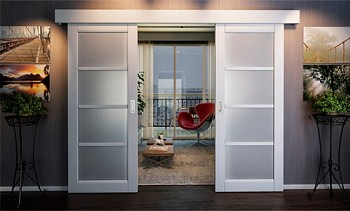How to choose interior doors from the whole variety
Interior doors are an important part of the interior. Not only practicality and functionality, but also the comfort and aesthetics of the home depend on their choice. To understand how to choose interior doors correctly, from all possible options, you need to read this article - all the necessary information regarding the device, types, functionality and price is collected here.
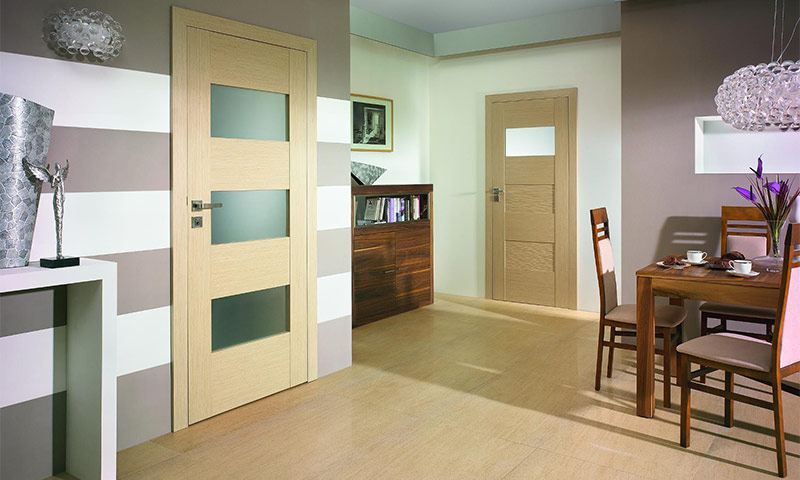
Content:
- The device of the main types of interior doors
- Production material and method of door decoration
- Ways to open the door
- How to choose the size of the interior door
- Which doors have better sound insulation
- Door frame selection
- Extras and platbands
- Graduation of prices for interior doors
- How to choose the color of interior doors
The device of the main types of interior doors
You can choose interior doors from four design options that are manufactured industrially and are most practical and convenient to use. It should be noted that all options are almost the same in convenience, but, nevertheless, each design has its own characteristics. produce the following types of doors panel, paneled, molded, plinth. What are their differences?
Panel interior doors
Sometimes this door design is called frame, which also very accurately reflects the features of the device. The basis of the door is a solid frame made of solid wood. Most often, pine is used as the most simple to process and inexpensive material. On both sides, the frame is sheathed with MDF sheets, and the voids inside, between the frame elements, are filled with lightweight insulating material or a honeycomb structure made of cardboard or MDF.
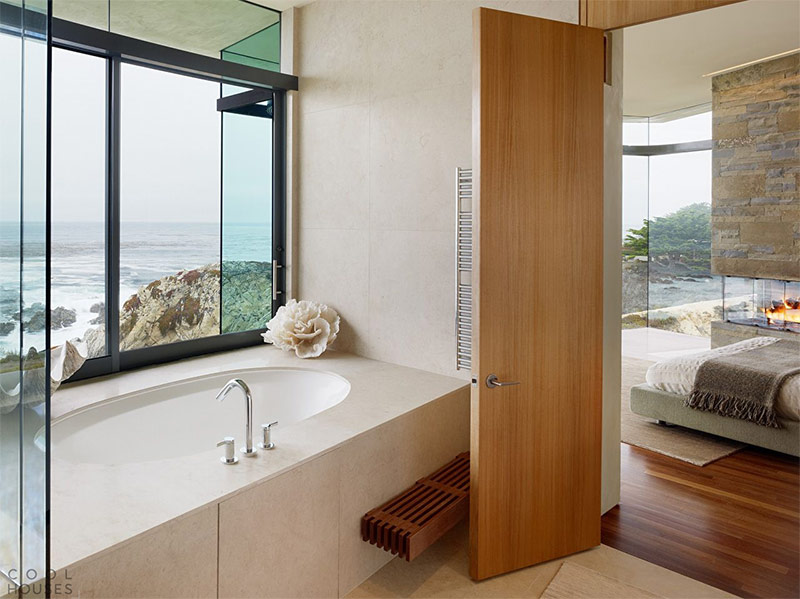
Doors are decorated on external planes with natural veneer, laminate, PVC film or other decorative materials. In accordance with the design, a hole of any configuration for glazing can be cut out in the canvas. In places of installation of glass and installation of baguette, the door frame is strengthened, as in the installation area of the door handle.
Panel door device:
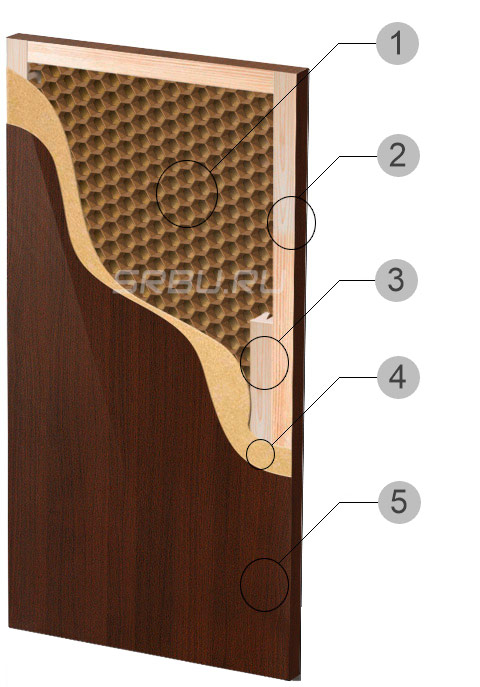
1. Honeycomb placeholder.
2. Frame of pine blocks.
3. Reinforcement for installing the lock.
4. MDF canvas.
5. Laminate or PVC coating.
Advantages of frame doors:
- light weight;
- low price;
- many finishes;
- structural strength.
Panel doors
Their design is also based on a wooden frame made of massive boards and bars. In addition to the external strapping, the frame contains internal elements in the form of vertical posts and horizontal jumpers. The space between the details of the frame is filled with special curly elements - panels, which are typesetting or massive planks, corresponding in shape to the configuration of the openings. Part of the canvas can be filled with glass or other decorative material.
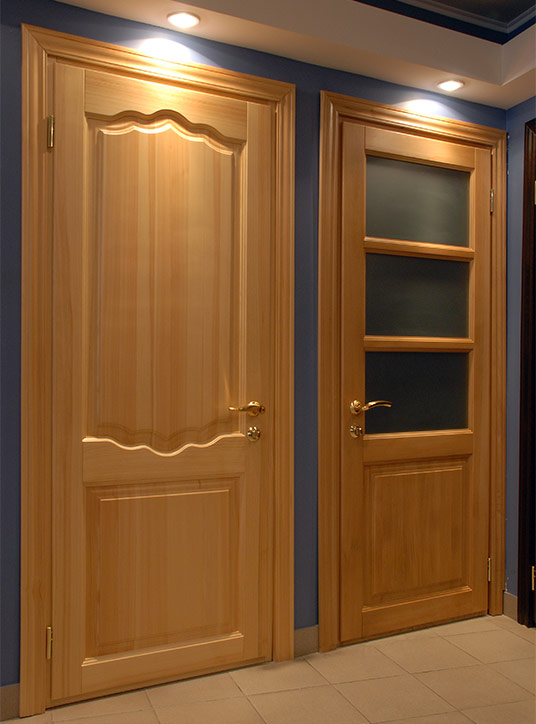
Panels are made of pine, precious wood or combined with MDF. This provides a wide selection of door design options without loss of strength and quality. The design is somewhat heavier and more expensive than a shield, but stronger and more resistant to frontal and lateral deformations.
Panel door device:
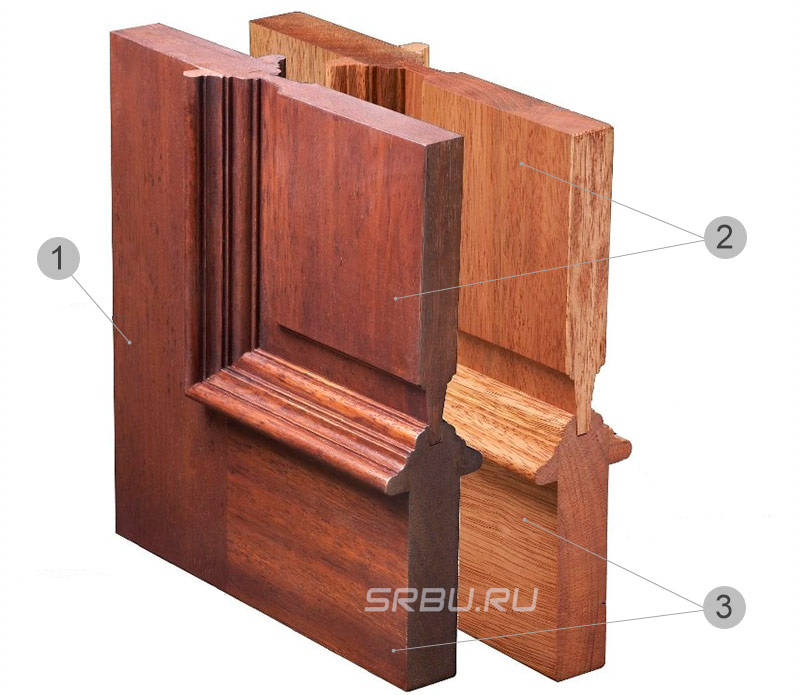
1. Vertical beam strapping.
2. Panels.
3. Crossbeam.
Benefits:
- strength;
- refined appearance;
- multivariance finishes;
- sufficient sound insulation.
Drawer doors
Such a door is assembled on a wooden frame by filling the openings with horizontal planks (bars) - tsars. The design is quite massive, which is fully offset by its strength. In addition, collet elements can be combined with glass or other materials, which allows you to create an unlimited number of design options.
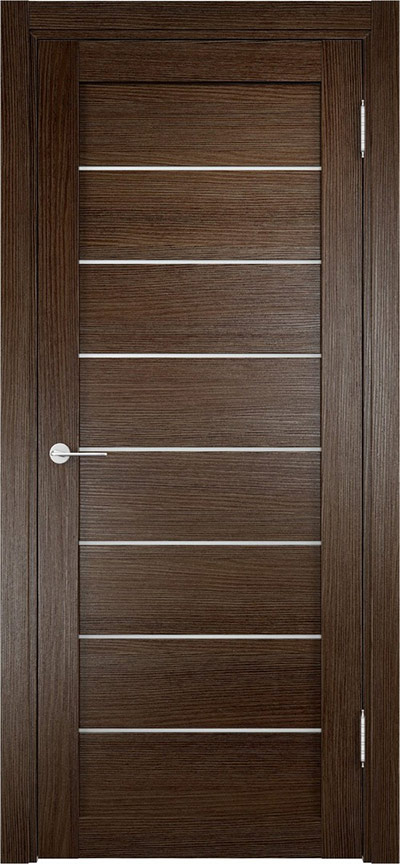
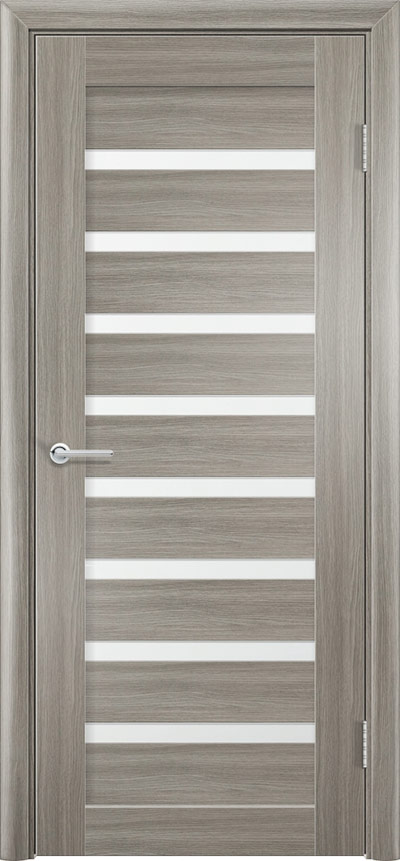
In appearance, such doors look like a stacked structure of individual elements, however, they cause a feeling of strength and reliability, which is actually the case - the drawer doors are as strong as the panel ones, but a bit heavier.
Arbor doors:
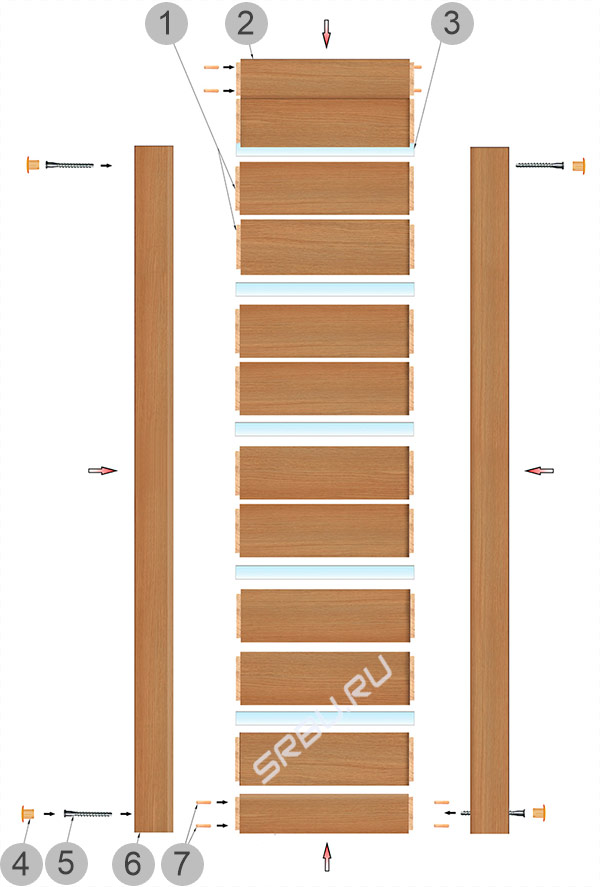
1. Elements of the canvas.
2. Tsarga.
3. Glass insert.
4. Decorative cap.
5. Tightening screw.
6. Stand profile.
7. Shkant.
Benefits:
- strength;
- durability;
- resistance to deformation;
- great design.
Molding doors
Their design is maximally simplified - a frame made of battens or metal along the perimeter and internal filling of glass. Options with filling with an opaque infill, also in full height and design with an additional central pillar, are possible.

Glass for doors is unbreakable, but its large size determines the considerable weight of the door assembly. In addition to glass, wooden, plastic or metal elements can be used to decorate the structure, but also make it heavier. But, despite this, the weight of the door is far from critical, and the original appearance allows them to be used in any interior style, but they look best in modern apartments and houses (techno, high-tech, eclecticism).
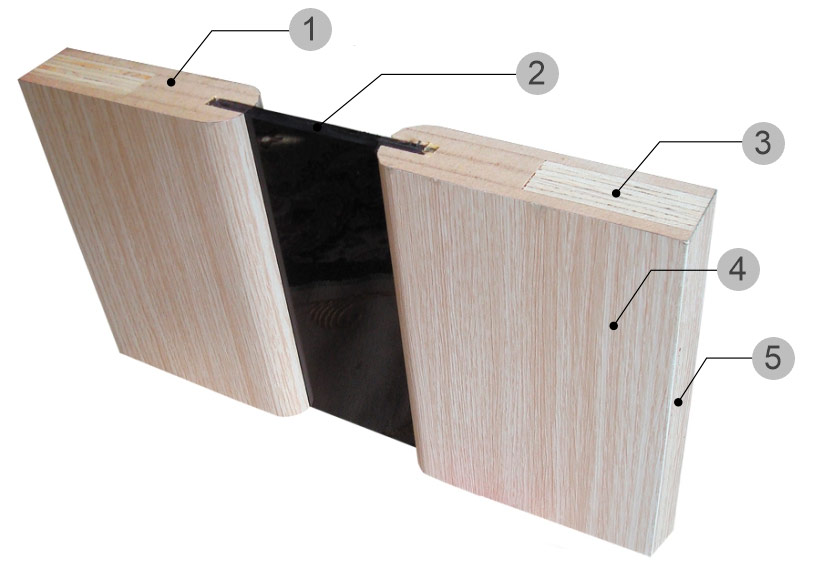
1. MDF.
2. Glass triplex.
3. Solid wood beam.
4. PVC film.
5. PVC edge.
Benefits:
- strength;
- great design;
- unlimited in size.
To understand how to choose interior doors in quality, it is necessary to understand that in terms of design and the number of design options, almost all designs are equivalent. The price of panel doors is the most affordable, paneled - the highest. The most durable will be paneled and regal solid wood doors.
Production material and method of door decoration
An important characteristic when choosing an interior door is the type of material from which it is made. A variety of designs determines the possibility of manufacturing doors from a wide variety of natural and artificial materials - wood, metal, glass, MDF, particleboard and others.
Solid wood doors
If you focus only on strength, then nothing better than an array of wood has been invented - although it is expensive, it is very reliable and high-quality material. Most often, these doors are paneled. Such doors fully comply with another important requirement for interior design - sound insulation. But at the same time the operation of doors from the array causes some difficulties. They are:
- sensitive to differences in humidity;
- quite heavy, which requires the installation of additional loops;
- prone to drying out.
When manufacturing doors from solid wood, they require careful selection of specially dried material, a significant investment of time for its processing and decoration.
Of the wood species, oak, beech, walnut are most often used, but they are only suitable for expensive custom-made doors. Like mahogany - this is a breed for handmade and in stores to buy quality doors made of valuable wood is almost impossible. But you can find good doors made of pine or spruce, less often - larch. When using high-quality stains and varnishes, they can be turned into real works of art indistinguishable from the work of cabinet makers.
Moreover, pine and other conifers are not as susceptible to drying out and cracking as oak or beech. In addition, the price of finished softwood interior doors is much lower, and the soundproofing and decorative qualities are almost at the same level, especially if glazing is used.
But in the constructions of panel doors, panel (for decoration) and molded timber, the pine acts as the main material - the frames are extremely durable, not subject to deformation and even without antiseptic treatment have a very high level of resistance to biological damage - mold, bloom and rot.Coniferous wood contains enough own resins to ensure that the service life is not inferior to treated wood in a dry atmosphere. Doors for bathrooms, baths and saunas require more complex preparation.
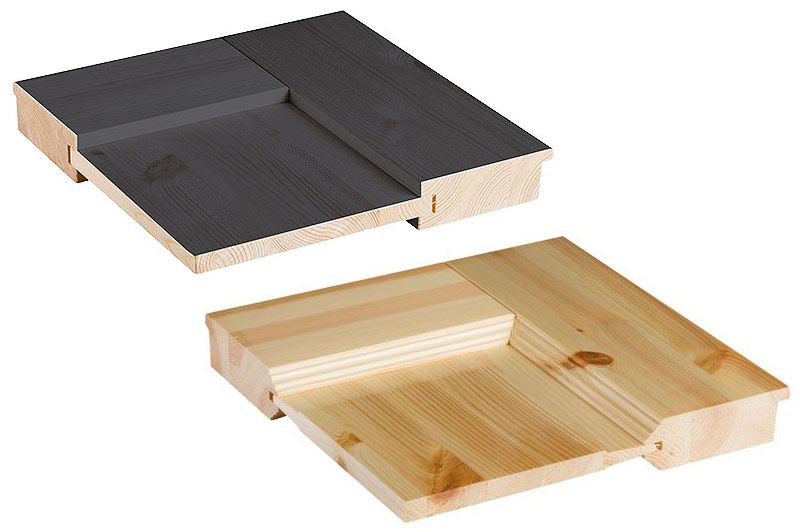
Doors made of solid wood in most cases will outperform structures made of synthetic materials, but lose to them in such an important parameter as price.
Doors made of artificial materials
The use of such materials makes interior doors cheaper without losing basic consumer properties. To begin with, we will analyze what internal content doors can have from artificial materials. In fact, the variety of internal content is great. As such materials can be used: pine blocks, chipboard, MDF, cellular cardboard. In this case, chipboard and MDF boards can be either solid or cellular. Hollow slabs affect the strength of the door, but makes them lighter and cheaper.
It is best to buy doors made of MDF - a fiberboard based on natural resins. This is a durable, waterproof, environmentally friendly material that is easy to process and allows you to get quite complex in configuration design.
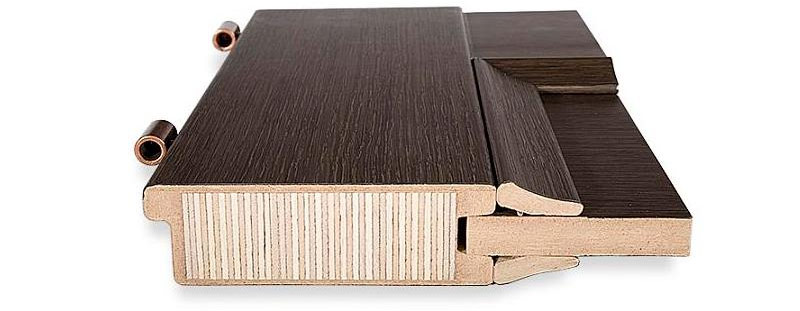
Doors filled with MDF.
MDF boards are more preferable than chipboard, especially as part of interior structures. For the production of particleboard, synthetic binders are used, which are prone to the release of not very safe fumes when heated. Particleboard structures are somewhat heavier, which requires reinforcing the frame and hinges.
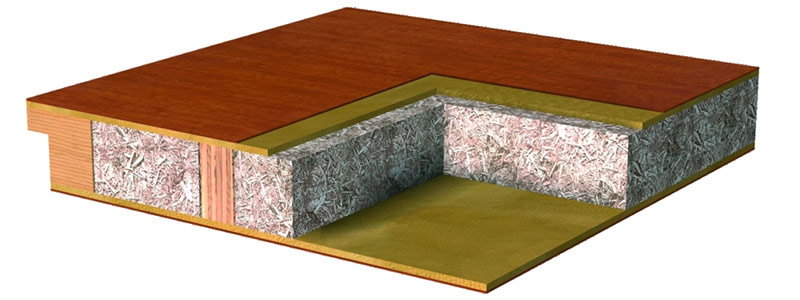
Doors of monolithic chipboard.
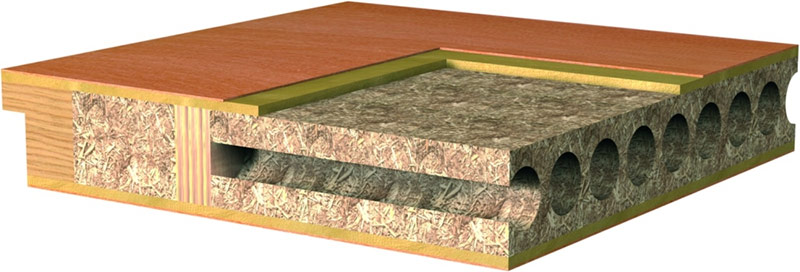
Doors from hollow chipboard.
Often, bars of low-value wood are used as internal filling, which is a good solution. However, the cost of such doors is slightly higher.
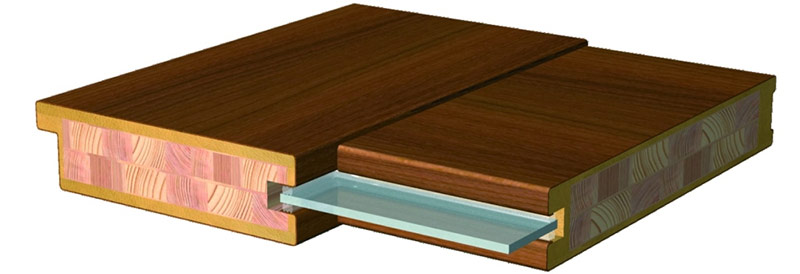
Doors filled with timber.
If the budget allows, then the purchase of doors with honeycomb filler should be abandoned. Such doors have the least strength. If their outer coating has a small thickness, then it is very easy to break through them by accidently hooking with any object.
 Doors with honeycomb filling.
Doors with honeycomb filling.
Regardless of the internal filler, pine or spruce beams that add rigidity to the structure are always used along the frame contour.
But the most important role is played by the external coating, which not only contacts the microatmosphere of the room, but is also able to actively influence it. But the influence of the atmosphere on a particular product should not be overlooked - humidity, temperature and dust levels very much affect both the appearance and the life of the doors.
Laminate. One of the most common materials used for exterior decoration of doors, however, its popularity is determined not only by protective and decorative properties, but also by price. This is one of the cheapest coatings, but the definition of “cheap” does not mean poor quality. Laminate in 95% of cases fully justifies its purpose and perfectly protects the base, while having an excellent decorative look.
In technical essence, this is a special coating that is applied to a clean material or paper base with imitation of coloring of valuable wood species. Before choosing an interior door with a laminated coating, you need to find out how it reacts to high humidity, temperature changes or an aggressive atmosphere, which can be, for example, in the kitchen or in the corridor leading to the bathroom. An aggressive atmosphere can be considered quite safe for humans, but saturated with vapors of detergents or greasy fumes.
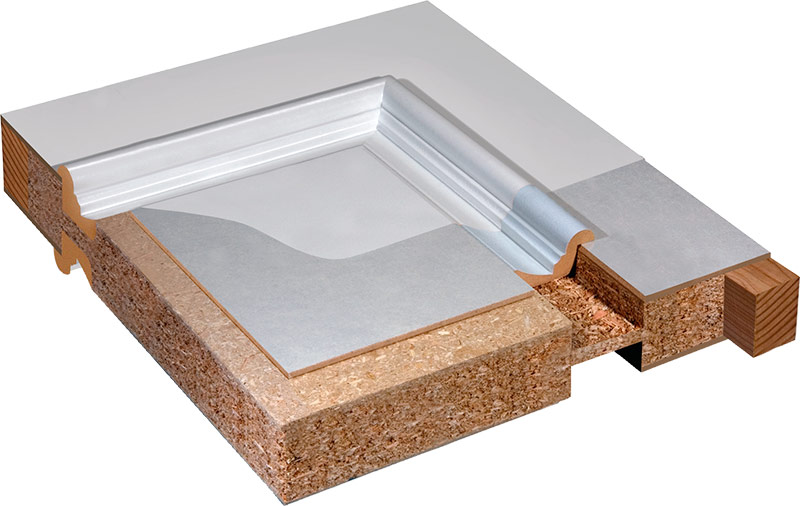
Particleboard doors covered with laminated MDF panels.
PVC coating. More convenient in all respects doors covered with PVC film. It is an impact resistant material characterized by high chemical and mechanical resistance. By design properties, it is not inferior to the laminate.PVC coating is produced in a wide variety of colors, both standard, according to various color fans and catalogs of paint manufacturers, and in imitations of valuable wood species. Also, any photo printing can be applied to the film, which is very important in non-standard interiors. In favor of their PVC coatings can be attributed exceptional color stability.
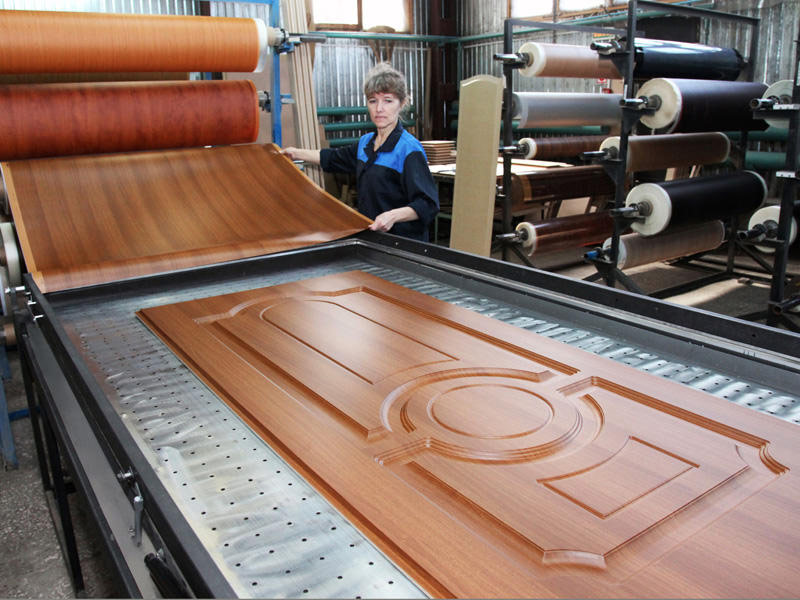
Natural veneer. Natural materials, mainly veneer, are often used to cover the base of interior doors. It is a thin section of wood, with a thickness of 0.1 to 10 mm. The finest types of veneer are used to decorate the doors, it is assumed that the interior doors are not subject to high mechanical stresses, do not interact with direct ultraviolet light and are not affected by sudden temperature changes.
Natural veneer, even the thinnest, perfectly conveys the characteristic texture of a particular tree species, retains excellent color and does not collapse under moderate physical influences. Veneer perfectly absorbs stains, paints and varnishes, has high adhesion to adhesives, with which it is fixed on the base. Often veneered doors are difficult to distinguish from products made from solid wood.

Particleboard and MDF doors coated with natural veneer.
Ecointerline interval. The cheaper option is eco-veneer. These are natural wood fibers bonded with synthetic resins. He completely repeats the drawing of a natural tree, but is inferior to him in environmental friendliness. Often formaldehyde and its components are used as a bonding material, which even under a layer of varnish are not entirely safe. In dachas, in country houses and in rooms where people are relatively rare - this is one of the most convenient options, both in price and in quality.
Vapors of synthetic resins can begin only in exceptional cases, at a temperature in the house above +40 0With or direct prolonged exposure to sunlight. In other circumstances, the eco-veneer is not more dangerous than natural. The very name of this material suggests to many that it is an environmentally friendly material, in fact, it is not. This material has nothing to do with natural veneer, except for appearance.
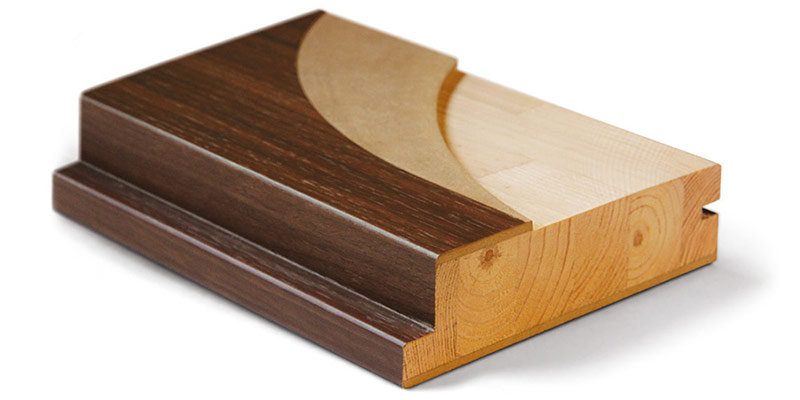
Doors made of pine beams finished with MDF panels coated with eco-veneer.
Glass. Glass is one of the best materials to fill the openings of the frames of interior doors. In addition to high design capabilities, door glass with a layer of transparent plastic (triplex) is absolutely safe. Even with strong blows it is difficult to break it; when resolved, it does not form fragments or any dangerous parts.
Glass can:
- tint in any color;
- decorate with metal and wood;
- paint;
- turn into a mirror;
- stained glass.
The only drawback of glass is the low level of sound insulation, but in most cases it is not a decisive property.
To summarize, we can say that the best solution would be MDF doors (preferably) or particleboard finished with natural veneers. But it will be the most expensive option. The next option is the doors of MDF or particleboard finished with a laminated coating or eco-veneer. The most budget option is the PVC film finish, while in terms of design variety it surpasses all coatings.
Ways to open the door
In addition to the material of manufacture and cost, in order to determine which interior doors are better to choose for an apartment, it is necessary to take into account their real functionality. One of the main properties is the opening method. Most often, door structures belong to one of four types:
- swinging;
- folding;
- sliding;
- swinging.
Depending on the layout of the house, the size of individual rooms and financial capabilities, doors are also selected. Like most designs, only the most practical remained on the market. If, for example, sliding doors are not suitable for you, this does not mean that they are bad.Each of the species has its own specific advantages, which are manifested only in specific circumstances.
Swing doors
Classic swing doors can be found in 90% of apartments and houses. Interior rooms are rarely double, except when moving from a spacious entrance hall to the living room or dining room. In other cases, single-leaf are installed.
The installation of hinges and locks is not difficult on switchboards, nor on paneled or regal doors. The simplicity of the design does not reduce its functional properties - on the doors you can install both ordinary and especially durable hinges, locks with a key, locks, latches. As a rule, swing doors are installed on strong boxes that are securely fixed to the walls.
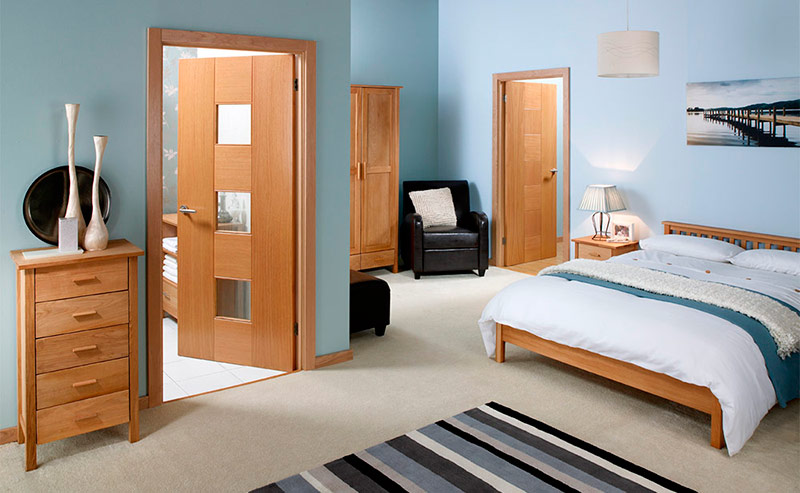
Sliding doors
The choice of this type of door is determined, in most cases, by the lack of space. To open them, no “dead zone" is required behind the wings - they simply slide along the wall and hide in decorative structures or are located openly. Sliding doors can be made in all versions - the presence of upper and lower guides along which the web moves, provides both structural stability and ease of control.
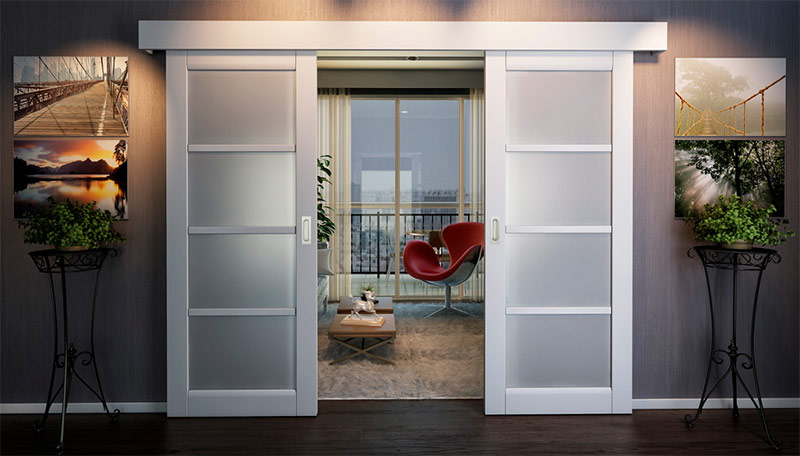
Folding doors
Interior doors are somewhat more complex than sliding doors. The complexity here is the hinges on which the wings are fixed. The doors are assembled in the form of an accordion, which folds into a compact design. By functionality, folding doors are in an intermediate position between swing and sliding, but in terms of complexity of manufacture and operation, they are much ahead of them.
Difficulties are manifested in the presence of numerous hinges, which, although operating at minimum loads, can be the weakest link. They can be performed both in the form of a single sliding structure, and in the form of two canvases. The second option is more preferable - it involves only two or three hinges, the load on which is very gentle. With a small weight of the wings, this design will serve no less than monolithic swing or sliding doors.
But with more than two hinges, the number of nodes at an increased risk level increases, the doors become difficult to manage and relatively short-lived in operation. It is advisable to install folding doors in the form of quick-moving partitions, for example, when the living room needs to be quickly turned into a spacious dining room for family celebrations. Folding doors surpass all other varieties in terms of decorativeness.
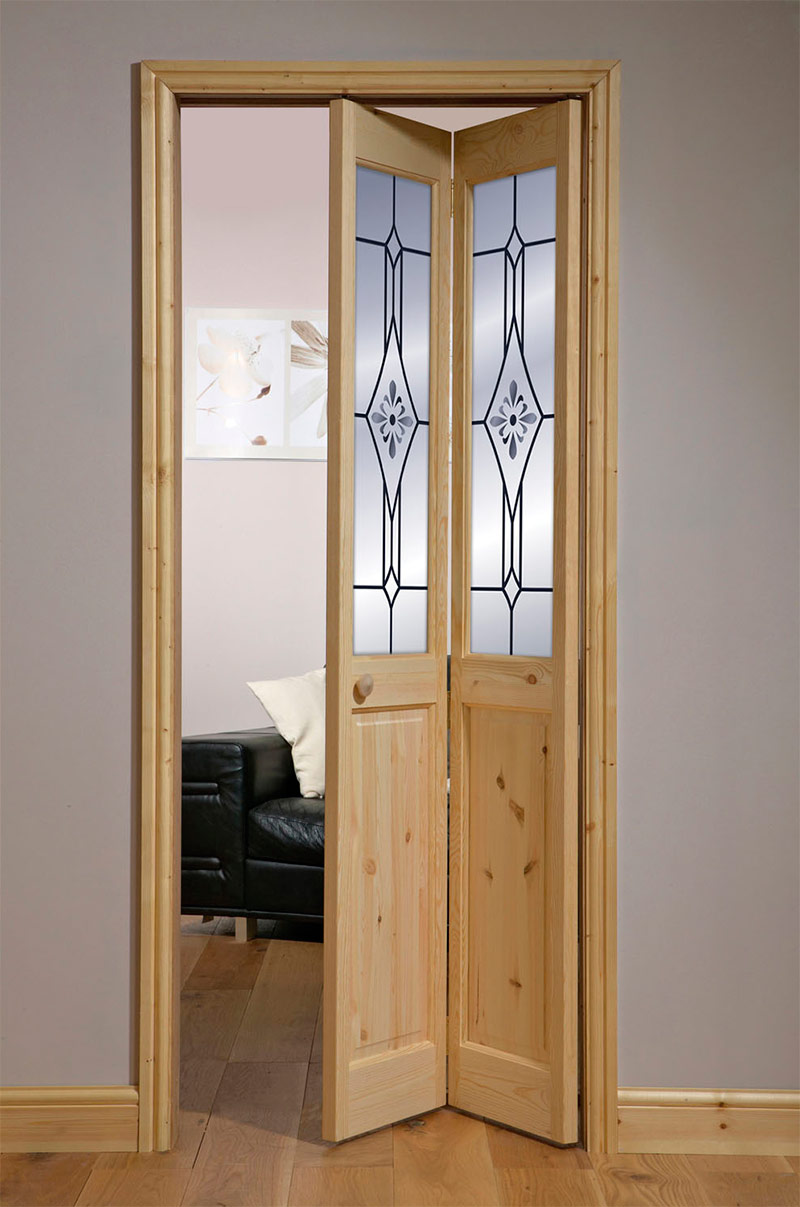
Swinging doors
The least practical design in an apartment or cottage. It is quite appropriate in public areas. Difficult to install, adjust and operate. For design reasons, usability and cost, it is much better to install one or two swing doors.
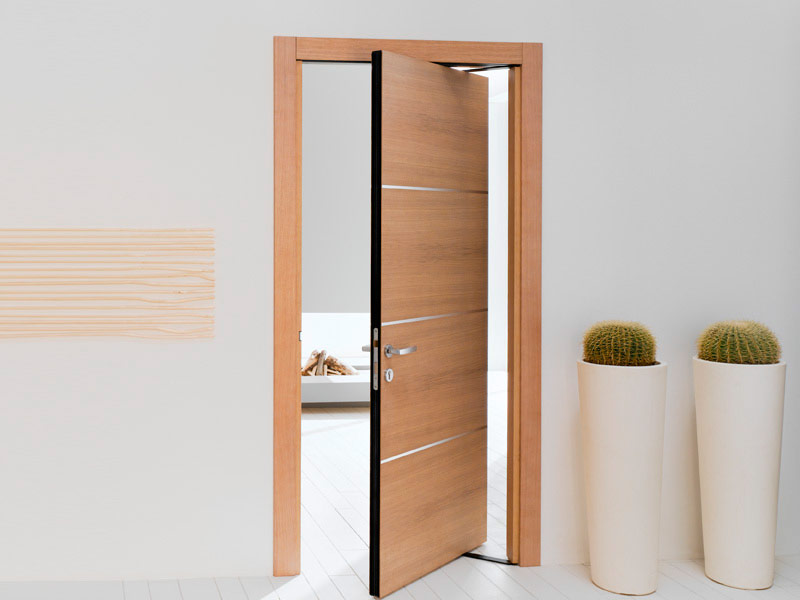
How to choose the size of the interior door
When choosing an interior door, the main role is played by functionality. You use the door several times a day, the slightest inconvenience immediately becomes noticeable and, if it cannot be fixed, begins to annoy. Many tips on choosing interior doors relate exclusively to the cost and material of manufacture, but completely forget about such a feature as convenience.
This parameter largely depends on the size of the door leaf. The larger it is, the more inconvenient it is to use. Practice has established the optimal dimensions of the canvas - 2000 x 600 x 700 - 800 mm. Given the size of the box, the doorway needs to be done a little more. No more than 1 cm of the thickness of the mounting foam or other sealant is allowed to seal the connection.
Different sizes of doors are designed for different rooms, the standard provides:
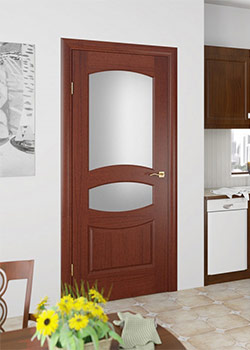
Kitchen
—
700 x 2000 x 70 mm.
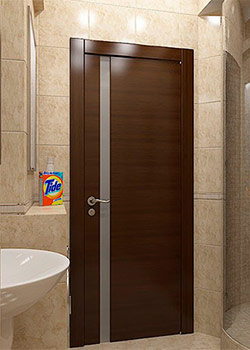
Bathroom
—
550-600 x 1900-2000 x 50-70 mm;
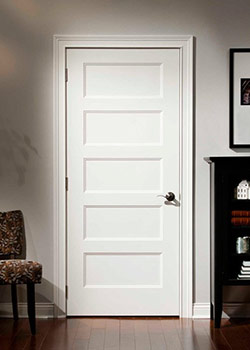
General rooms
—
800 x 2000 x 20-70 mm.
In industrial construction houses, the dimensions of the door apertures are standardized, but in private cottages and country houses the door sizes vary quite significantly. When building your own home, it is best to adhere to generally accepted standards - there will be less problems, both when ordering and when installing doors.
When ordering doors, it is necessary to determine the main dimensions:
- doorway around the perimeter;
- box thickness;
- width of platbands;
- threshold sizes (if any);
- sizes of extensions.
As a rule, most sellers of standard-made doors on their websites provide sections under the heading “Calculator”. With their help, you can independently calculate the size of the purchased door, based only on the dimensions of the existing opening and wall thickness (partitions).
When ordering a door directly from manufacturers, it is necessary to call a measurer. Only in this case it is possible to achieve optimal aspect ratios and, in many cases, reduce the cost of construction and installation.
Which doors have better sound insulation
When choosing an interior door, very often the level of sound insulation goes into the background. In the first place, as a rule, design, material of manufacture and cost. Only during operation does the level of protection against noise fully manifest itself.
Soundproofing applies to both protection against external noise and protection against the penetration of sounds from the room. As a rule, high-quality doors provide the same level of protection in all directions. The proper level of sound insulation is achieved by the use of internal fillers with certain properties in panel and molded doors and the external decoration of all other structures.
In addition to reducing the acoustic conductivity of the web itself, it is necessary to pay attention to the properties of gaskets and seals in the area adjacent to the box box.
Of all existing structures, the most effective in terms of sound insulation are:
- doors with a mock quarter;
- unglazed;
- without internal voids;
- total thickness of at least 40 mm.
The effectiveness of the mock quarter is determined by the large contact area of the canvas and the box. With correctly fitted edges, the sound has no chance to penetrate.
In the presence of glass, sound is transmitted quite efficiently due to the solidity of the material. Even in the case of triplex, sound insulation is insufficient - internal vibrations are transmitted almost without amplitude changes. Soundproofing effect can occur only in the low or high frequency region. But audible noises are transmitted almost unchanged.
A good solution in terms of sound insulation are inexpensive panel doors. Thanks to the internal honeycomb filler made of cardboard or MDF, sound vibrations are damped over the entire range and external noise is reduced in intensity by more than 50%. Especially tangible effect when filling the internal cavities with polyurethane foam or polyethylene foam. But such doors must be ordered individually.
Door frame selection
When deciding which interior doors are best to choose for an apartment, one should not forget about the door frame. It not only performs the functions of a load-bearing force element that holds the canvas and provides a tight locking of the door, but also serves as the basis for the external decoration of the doorway.
By their design, the boxes are divided into ordinary and telescopic. The first are rectangles of timber, firmly fixed to the wall with dowels or anchor bolts. Platbands and other decorative elements are attached to them with glue, screws or nails without hats.
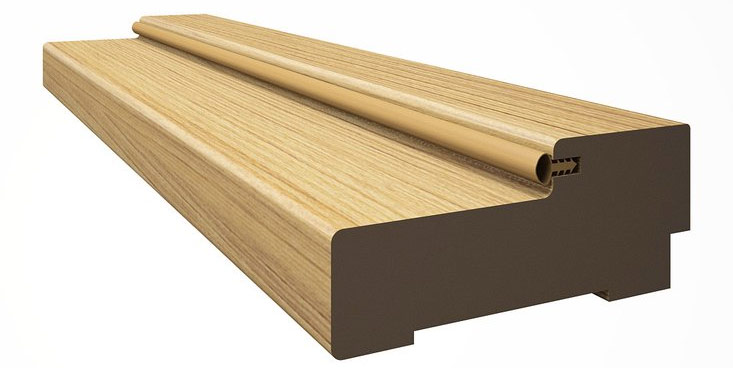
Profile of an ordinary door frame.
Telescopic equipped with special slots around the perimeter, in which platbands are fixed by means of special protrusions.They are more convenient to install than conventional ones, and during cosmetic repairs without replacing doors and windows, they can be painted or glued without extra time for dismantling the lining.
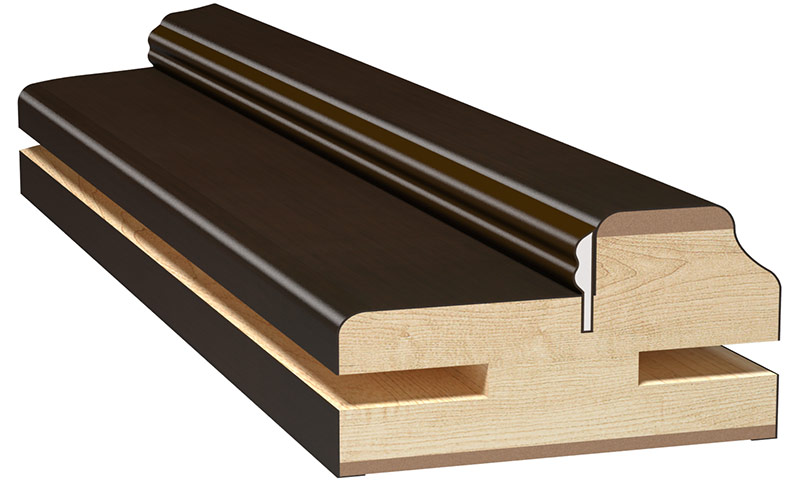
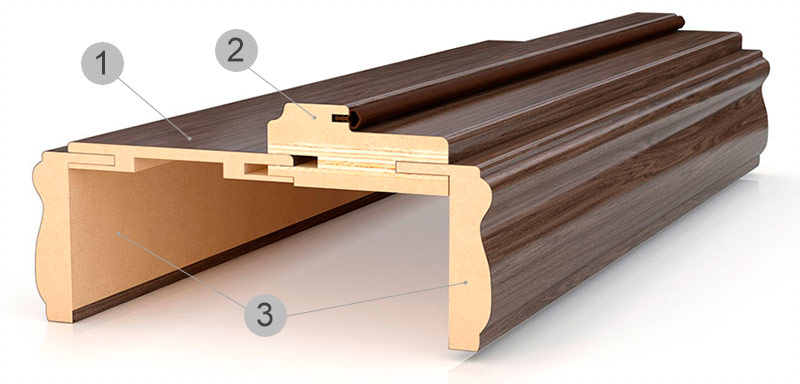
1. Dobor.
2. Box.
3. Platbands.
Boxes also come with and without thresholds. The second option is very in demand when finishing an apartment or house with floors on the same level. It is very convenient when using robotic vacuum cleaners and laying flooring on the entire floor area without transitions and joints.
With a threshold.
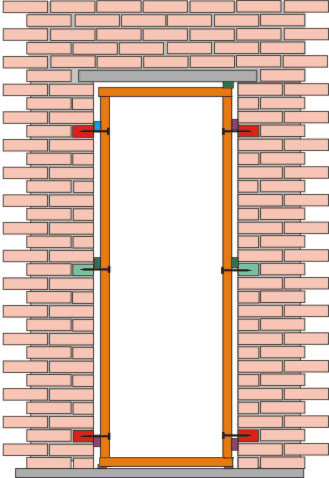
No threshold.
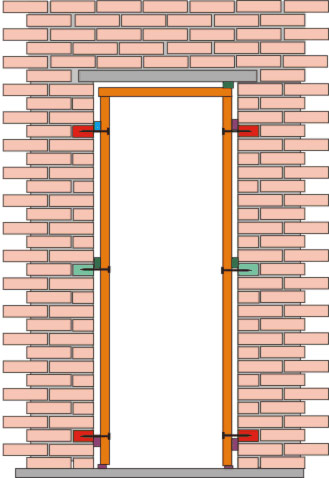
On the strength of the entire structure, the choice of box option is not much affected - as a rule, vertical and horizontal bars are attached directly to the wall with powerful dowels that penetrate deep into the wall material. Boxes without thresholds can also be made in the form of standard rectangles with upper and lower crossbars. If the threshold should not stand out above the floor, then the dimensions of the box are calculated so that it is recessed under the cover.
One of the common mistakes when installing doors between rooms is that they are selected according to the residual principle, after the bulk of the repair. A box must be installed before installing flooring. Only in this case can complete harmony of all interior elements be achieved.
In most cases, the box is made of wood. But there are options made of pressed cardboard or MDF. Boxes made of such materials should be discarded due to their weak strength and stiffness.
Extras and platbands
With a standard door frame width of 70 mm, it is very difficult to make it overlap the entire thickness of the wall or partition. Most often, the walls are wide and the boxes need to be expanded. This process is carried out using special inserts - extras.
Their installation is carried out by inserting between the angle of the opening and the cut box. As a rule, extras are produced in standard sizes 100, 150 and 200 mm wide. If their sizes do not coincide with the width of the opening + width of the box, then the extensions are sawn along the length to the desired width.
The following types of extensions are distinguished depending on the type of end:
- with an edge;
- without edge;
- telescopic.
Extras with an edge are covered with PVC, laminate or eco-veneer, they are the most common and very convenient to use.
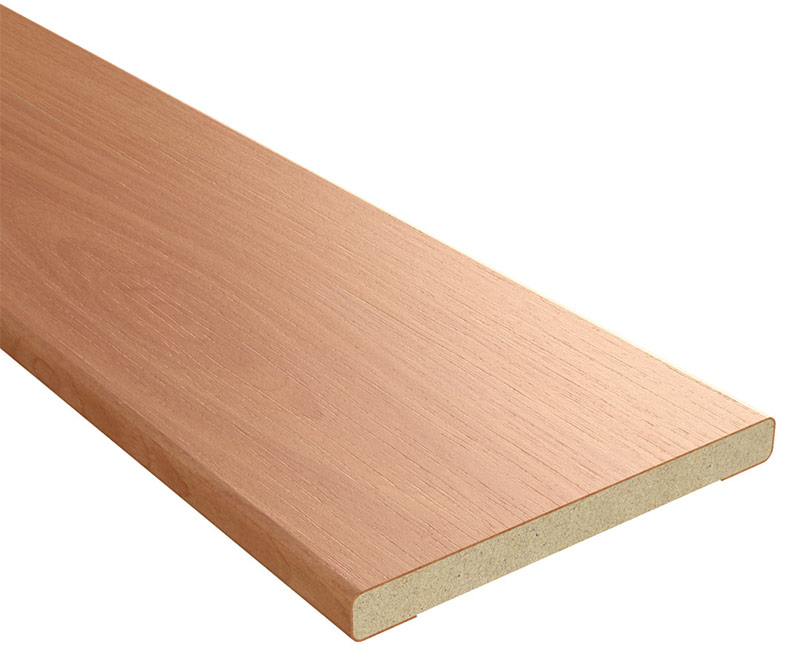
Fenders without edge are covered with natural veneer, they are used on expensive versions of doors made of natural wood or veneered with valuable wood base.
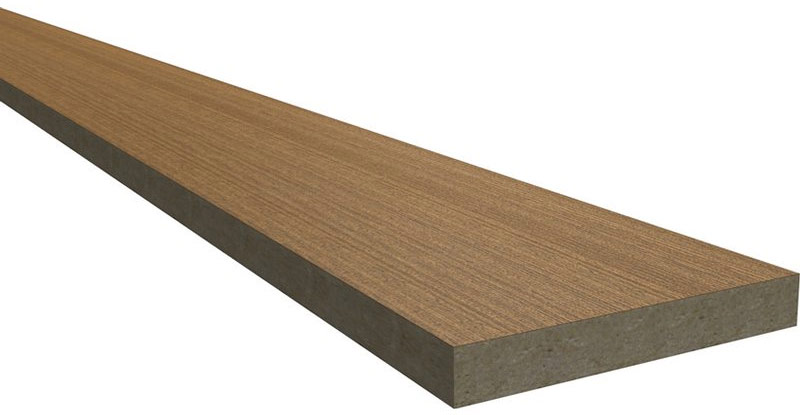
Telescopic extensions are equipped with a longitudinal protrusion or groove, ideally suited to the fastening elements of the box and casing. When installing the door, they are assembled like a designer and form one monolithic joint, which does not even require glue or hardware. They are quite simple to install, if the wall thickness matches the dimensions of the door frame and extensions. Otherwise, the add-ons must be cut, which causes certain difficulties with subsequent installation.
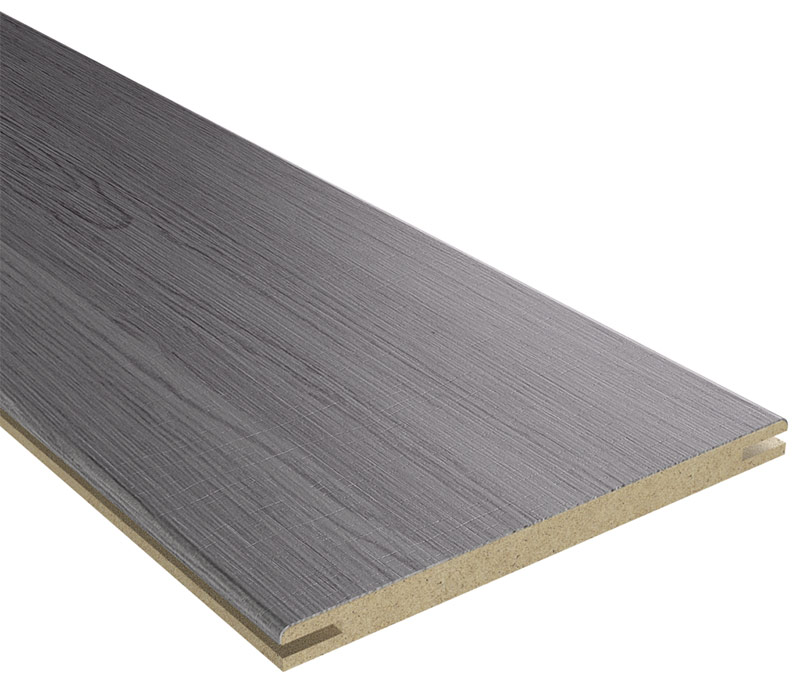
If there are very wide walls that significantly exceed the standard dimensions of the extensions, you can use two sets, docking them with a glazing bead or on glue. When installing boxes with extras, one rule should be followed - all elements are mounted before the structure is installed in the wall. So it’s much easier to adjust the dimensions and firmly fix the joined parts. Only after assembling the box to the required width can it be installed and secured.
When the width of the extension is not more than 50 mm, its separate installation is allowed. But at the same time, it is necessary to accurately measure the width of the elements and choose a fastening method that does not violate the integrity of the door structure. If you do not use glue or hardware, then over time the box may dry out and cracks will appear between it and the finish, which even using putty can be quite difficult to fix.
The required number of extensions, depending on the thickness of the wall of the doorway and the width of the extension, you can determine from the table:
| Wall thickness in mm | Width of extension | ||
|---|---|---|---|
| 1000 mm | 1,500 mm | 2000 mm | |
| from 70 to 90 | 1,5 | - | - |
| from 90 to 165 | 2,5 | - | 1,5 |
| from 165 to 215 | - | 2,5 | - |
| from 215 to 265 | - | - | 2,5 |
Platbands
One of the most decorative elements when installing interior doors are platbands. They not only mask the seam between the box and the wall, but also visually increase the doorway, which in many cases allows you to influence the interior design in a certain way.
You can choose platbands from several varieties that differ in the transverse profile. According to this parameter, decorative strips are divided into:
Flat.
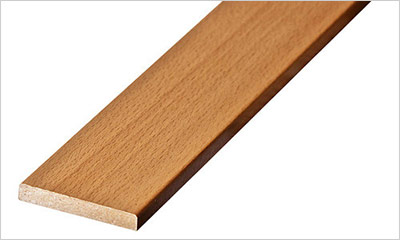
Semicircular.
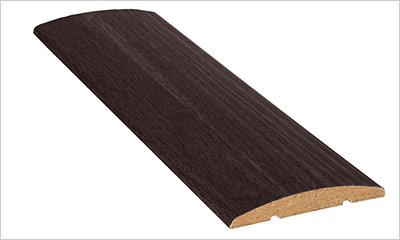
Teardrop-shaped.
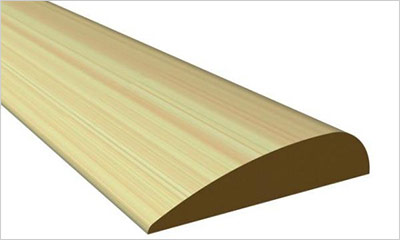
Curly.
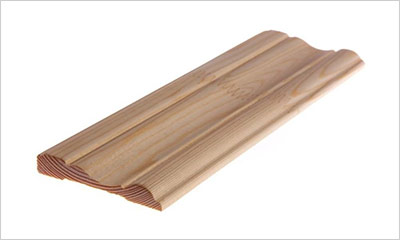
If flat, drop-shaped and semicircular have a more or less standardized profile, then curly ones are very diverse and depend only on the type of cutter used in their manufacture.
As in the case of the box and extension, there are telescopic platbands. This type of platband has a curved edge in the form of the letter "G" throughout the entire length. The bent element, when mounting the casing, is inserted into the groove of the box or extension. Thanks to this fastening, it is possible to adjust the thickness of the box to the wall thickness.
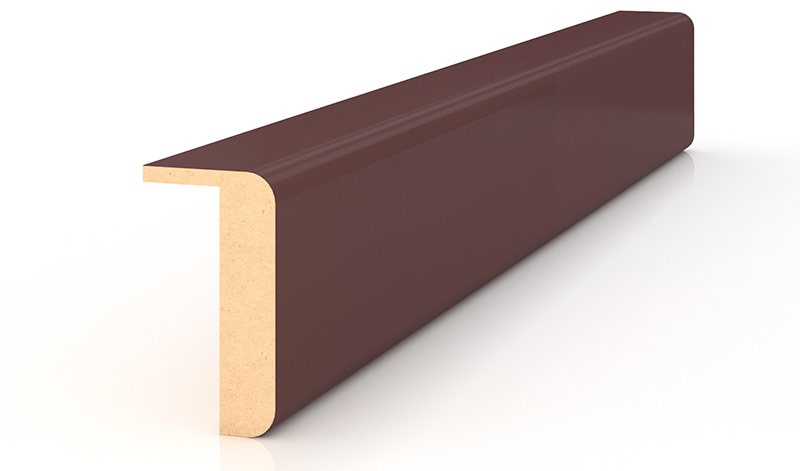
The width of the platbands is from 7 cm, and the thickness is in the range of 8 - 10 mm. Flat and semicircular platbands are installed on most door structures of a budget level. More complex - on the doors by special order or made of expensive wood.
The width of the platbands depends on the size of the doorway. On small doors that practically do not differ from the standard, platbands of no more than 7 cm wide are mounted; strips up to 9 cm wide are used for complex structures with an increased width or height. Functions of independent decoration are not peculiar to them.
Mounting decorative strips on interior doors is a rather complicated operation, which at first glance seems elementary. During installation, it is necessary to adhere to certain rules that determine the final appearance of the cladding. The experience of builders says that finishing operations belong to one of the most complex and responsible ones - all minor errors and miscalculations are required to level exactly the finishing work.
Installed platbands should form a perfect rectangle. To cut contact edges at an angle of 450 A special template called a miter box is used. Without this device, it is almost impossible to make the correct cut manually. And with this device, the cut is not ideal. For a high-quality cut, a special miter saw is used, which is installed at a given angle. Most often it is used when installing skirting boards, but for platbands it is also quite suitable.
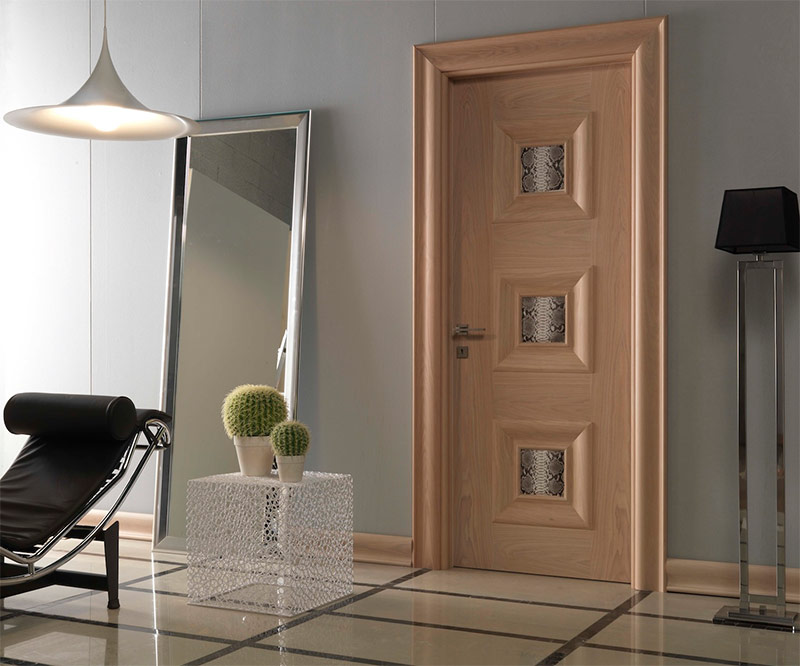
Sometimes platbands are joined at an angle of 900. Here, one cannot do without a special template and a saw with small teeth (or a jigsaw). A joint at a right angle is easier to perform, but it looks less beautiful and professional than that made at 450.
Platbands are fixed with screws for puttying, nails without hats or glue. The choice of method depends on the features of the box and the material of the wall. Although in most cases the platband is attached directly to the box, the features of the wall decoration also have a certain value.
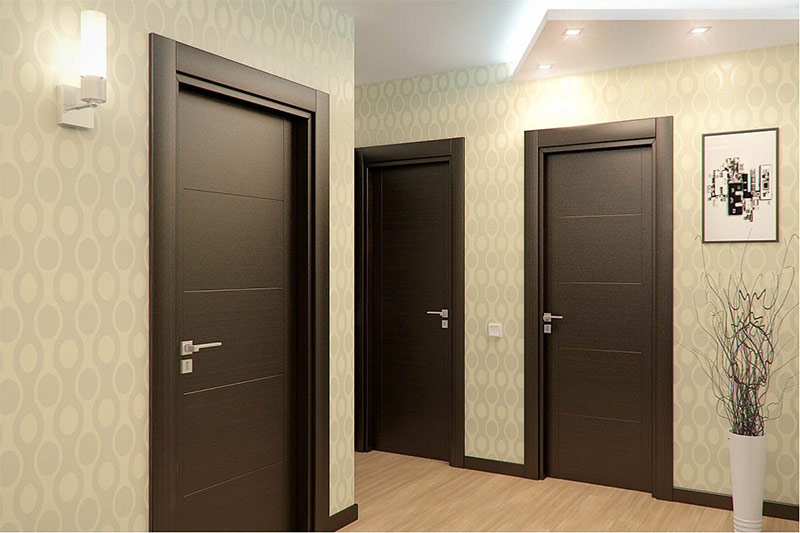
In addition to the usual platbands for decorating doorways, more complex structures are also used - capitals, cornices, visors. They can be made both from wood and from other materials - gypsum, expanded polystyrene, polyurethane foam. Before choosing interior doors, it is necessary to fully develop the design project composition, so that there are no problems, both when installing the door, and when decorating the opening.
Graduation of prices for interior doors
You can choose interior doors in several ways. The most interesting thing is that price is not the main criterion. Sometimes a high-quality door of a conventional swinging construction costs much less than a complex folding or sliding door that will not last long.But it can be quite the opposite - a seemingly high-quality simple door will be less reliable than a design of several paintings on hinges and rollers.
It is also difficult to determine which interior doors are best to choose for an apartment, focusing only on the material. There is a misconception that doors made of oak or other expensive material are better than pine or other coniferous material. Directly encountering the properties of certain types of wood, most users radically change their views - with relative cheapness, pine is much more practical than oak or beech.
It does not crack, rarely shrinks, and is very easy to handle, which allows you to install hinges or locks without much difficulty. Pine is very susceptible to stains and paints, which can not be said about oak or other hardwoods, such as birch bark. With a professional choice of varnish and stain, pine doors give 100% handicap to any exotic tree, both in price and in ease of use.
Artificial materials, particleboard, MDF, composites, glass and metal are quite capable of replacing wood in the manufacture of interior doors. By their design qualities, ease of installation and durability, they are quite able to compete with wooden ones. The price of even the most sophisticated exclusive models rarely exceeds doors made of natural materials. And the strict requirements for the products of door manufacturers do not allow openly low-quality products hazardous to health to the market.
What to look for
First of all, this is a manufacturer. High-quality interior doors are produced at factories in Israel, Finland, Belarus. Very high-quality doors of Russian production appeared, and moreover they were able to compete not only in price, but also in terms of quality.
The second parameter by which it is worth evaluating the door is the fittings. Hinges, guides, handles, locks should only be metal. Any plastic indicates a low quality product. The power of the hinges and locks should correspond to the weight of the door and the material of manufacture, but even on light frame-panel doors hinges or corners that can be bent by hand are unacceptable.
By price category, you can focus on these numbers:
- from 35 000 rubles - luxury doors made of solid wood;
- 10,000 - 20,000 rubles - quite decent doors made of wood, MDF, glass. They are distinguished by a high level of decoration and a wide choice.
- 2,000 - 4,000 rubles - the budget segment. A great choice for an average apartment or house. In terms of consumer qualities are not inferior to more expensive.
How to choose the color of interior doors
The choice of color is no less important task than the choice of material or structural type of doors. The door must conform to the overall design concept. The easiest way is if a unified design project is developed by professional artists, according to which repairs are made and the color solutions of all elements are determined in advance.
When choosing a color yourself, you should rely both on your own taste and on several generally accepted rules. There are not many of them, so it’s difficult to make a mistake. You can focus on contrast or harmony. The second option is more true - the style of home design should match the style and design of the doors.
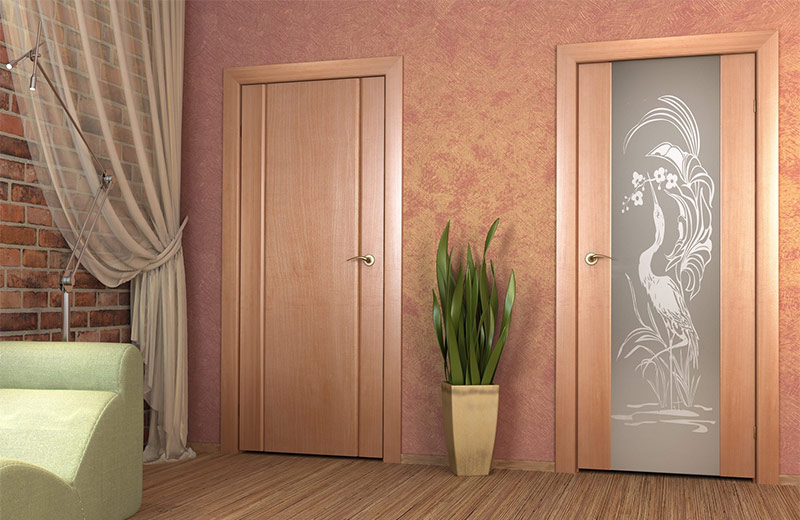
Doors made of solid wood or decorated with wood fit almost all interior styles, as well as white or painted in bright colors. The same choice will be successful if the floors in the rooms are made of different materials, and the walls are painted in different colors.
You can choose the color of the doors according to the color of the walls, or in contrast with it. But there are a number of pitfalls - going to repaint the walls, you will be limited in the color palette. At every repair, changing the doors is pretty expensive.
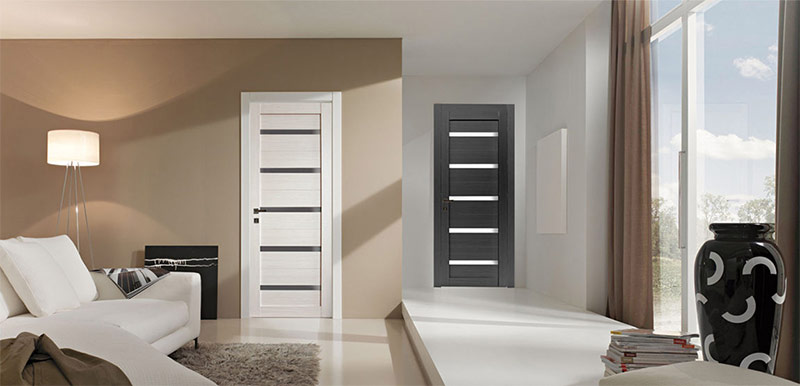
It is also difficult to choose the color of the door to match the color of the furniture - it’s not easy to buy furniture for all rooms in one color scheme. Therefore, it is best to dwell on a color that matches the principle of harmony or contrast to most home decoration or the color prevailing on the walls.
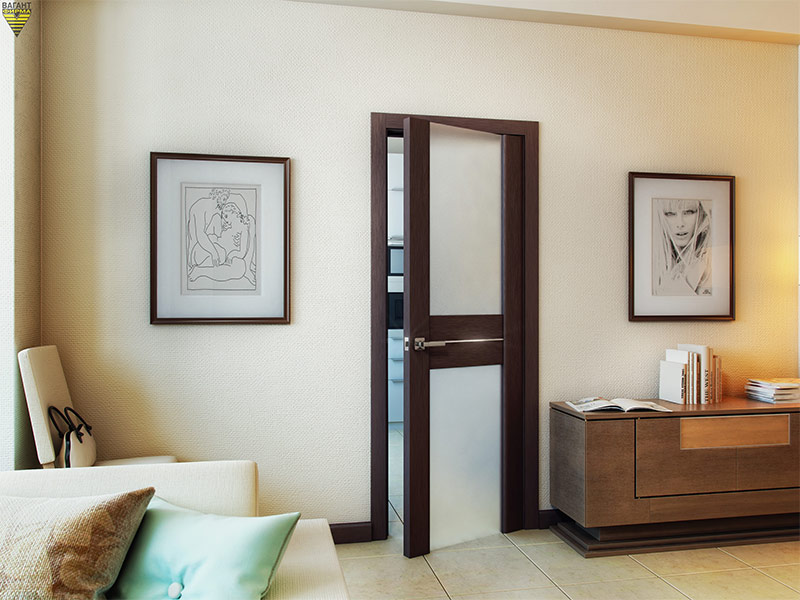
Sometimes you have to hear advice on how to choose interior doors by color, recommending two-tone solutions - one surface, for example, is light and the other is tinted like wood. Such experiments are entirely acceptable, but only if the interior design concept was developed by a professional designer.

